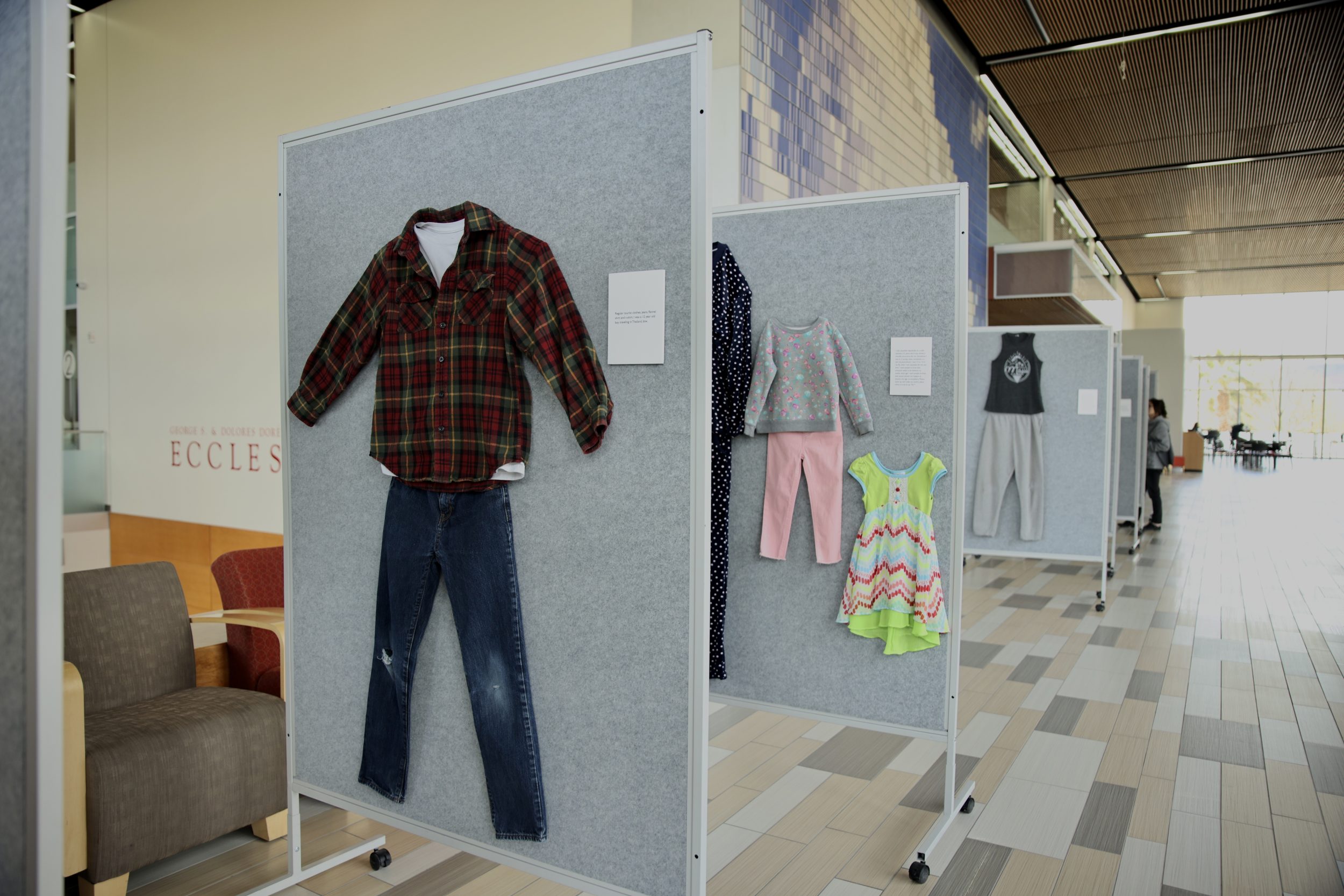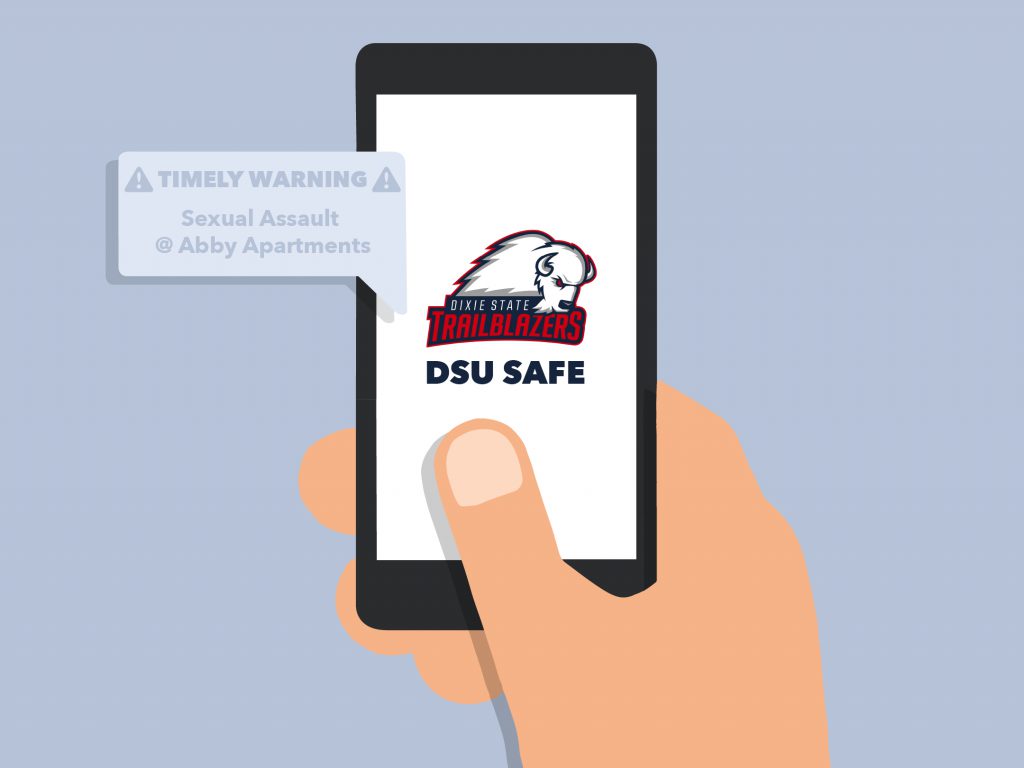The “What Were You Wearing?” exhibit conveys the message that survivors of sexual assault are not at fault – and they are not alone.
As April is sexual assault awareness month, the exhibit hosted by the St. George DOVE Center displays clothing items that resemble the clothes an individual was wearing when they were assaulted. Survivors are often asked, “What were you wearing?” The exhibit states this question is often asked of survivors when they choose to disclose the crime to those they trust.
The introduction of the exhibit states: “Victim blaming discourages survivors from seeking help or justice and allows perpetrators to avoid accountability for their choice to commit a crime. This exhibit helps dispel some myths about sexual assault. A person’s choice of clothing or behavior does not coerce or force someone else to commit sexual assault.”
The display of replicated clothing along with captions of survivors stories, showcase the truth about being a sexual assault victim: the truth is anyone can be a victim. The clothing and captions in the exhibit provide the knowledge anyone can be a victim by featuring statements from people who have been assaulted by family members and well known friends. One statement was accompanied with a caption stating he was a 12 year old boy traveling.
Elizabeth Bluhm, DOVE Center education program manager, said the first “What Were You Wearing?” exhibit at Utah Tech University started in 2018 when Bluhm was inspired by other “What Were You Wearing?” exhibits she found online.
Bluhm said, “The first year, I reached out to former clients and local therapists to find survivors who felt ready and willing to share their story in an anonymous but public way.”
The exhibit now features a submissions box where survivors can write down their experiences to share anonymously. Years later after the first exhibit featured at Utah Tech, the DOVE Center now receives emails from survivors across the United States who want to submit their stories. Bluhm said some of these survivors even donate the actual clothing they were wearing.
Bluhm said the exhibit helps survivors in three ways:
- “First, we hope this exhibit helps to chip away at the victim blaming culture that keeps sexual assault survivors from reporting and/or seeking help and allows perpetrators to avoid being held accountable for their choices to commit criminal acts.
- Second, it can help survivors know they were not to blame for what happened to them, and they are not alone.
- Third, it’s a way to reach survivors, their friends/family and community members about the services and resources provided locally by DOVE Center and on campus by the Booth Wellness Center.”
The DOVE Center advocates often meet survivors who walk through the exhibit who are unaware of the services provided by DOVE. Family members and friends of survivors also reach out to DOVE after seeing the exhibit to learn how they can best support their loved one who has been assaulted.
Markee Pickett, DOVE Center communications manager, said having this exhibit on campus is powerful for students to see.
Pickett said: “According to RAINN, college students experience sexual assault at a much higher rate than non-students. We want this exhibit to be a conversation piece for students and bring more awareness to sexual assault. The more students who see this exhibit, the more aware they are that help is available and that what happened to them is not their fault.”
Elle Burton, a sophomore elementary education major from Ogden, said walking through the exhibit brings about mixed emotions and feelings of being heart broken.
Burton said: “I think it does happen more often than people would like to believe. I think it’s awesome our school does an exhibit like this to bring awareness. I feel like walking through this exhibit, whether it has happened to you or not, it just makes you a good advocate for those who have had that happen to them.”
The exhibit is open to the public and on display at the Holland Centennial Commons April 3-7. It will then be displayed in the Dolores Dore Eccles Fine Arts Center April 10-14. The DOVE Center has pamphlets on assault and how survivors can get help featured alongside the exhibit.
Bluhm said the message to survivors is: “You are not alone; you have survived a traumatizing experience that was the result of someone else making choices for you that they didn’t have the right to make. There are ways to come to terms with what you’ve experienced and people willing to listen and help you process it so it doesn’t feel like it defines you. You are resilient.”



